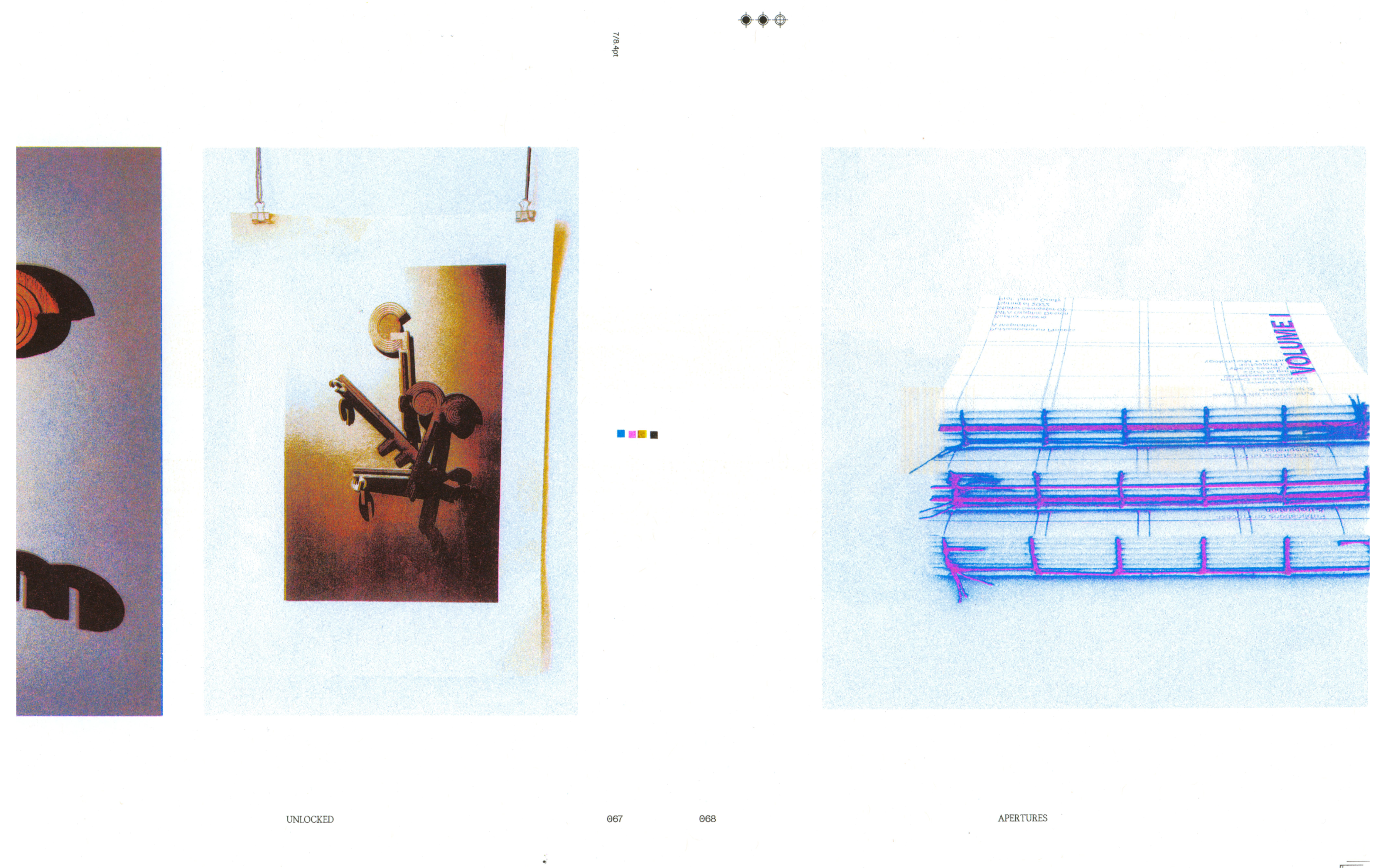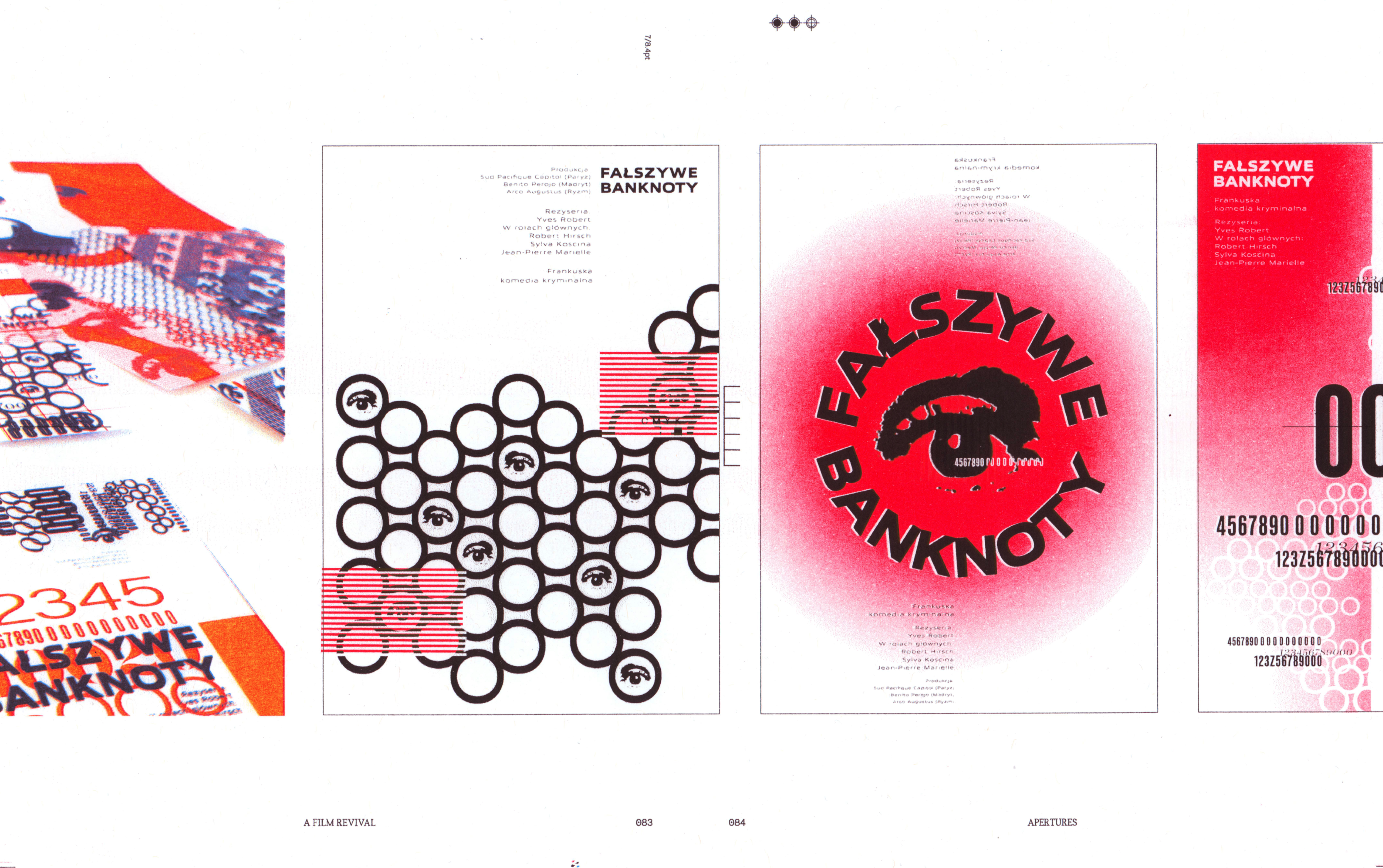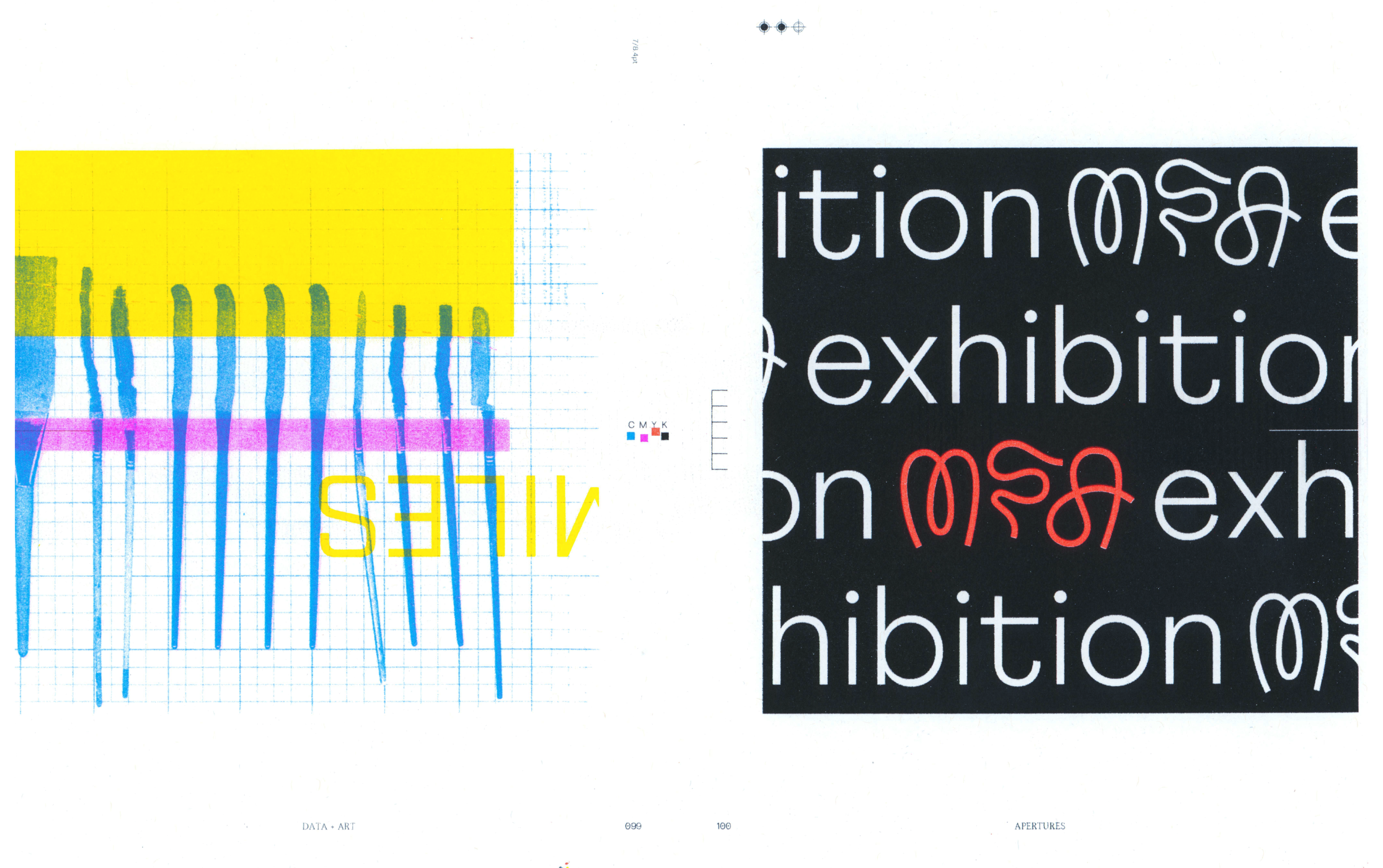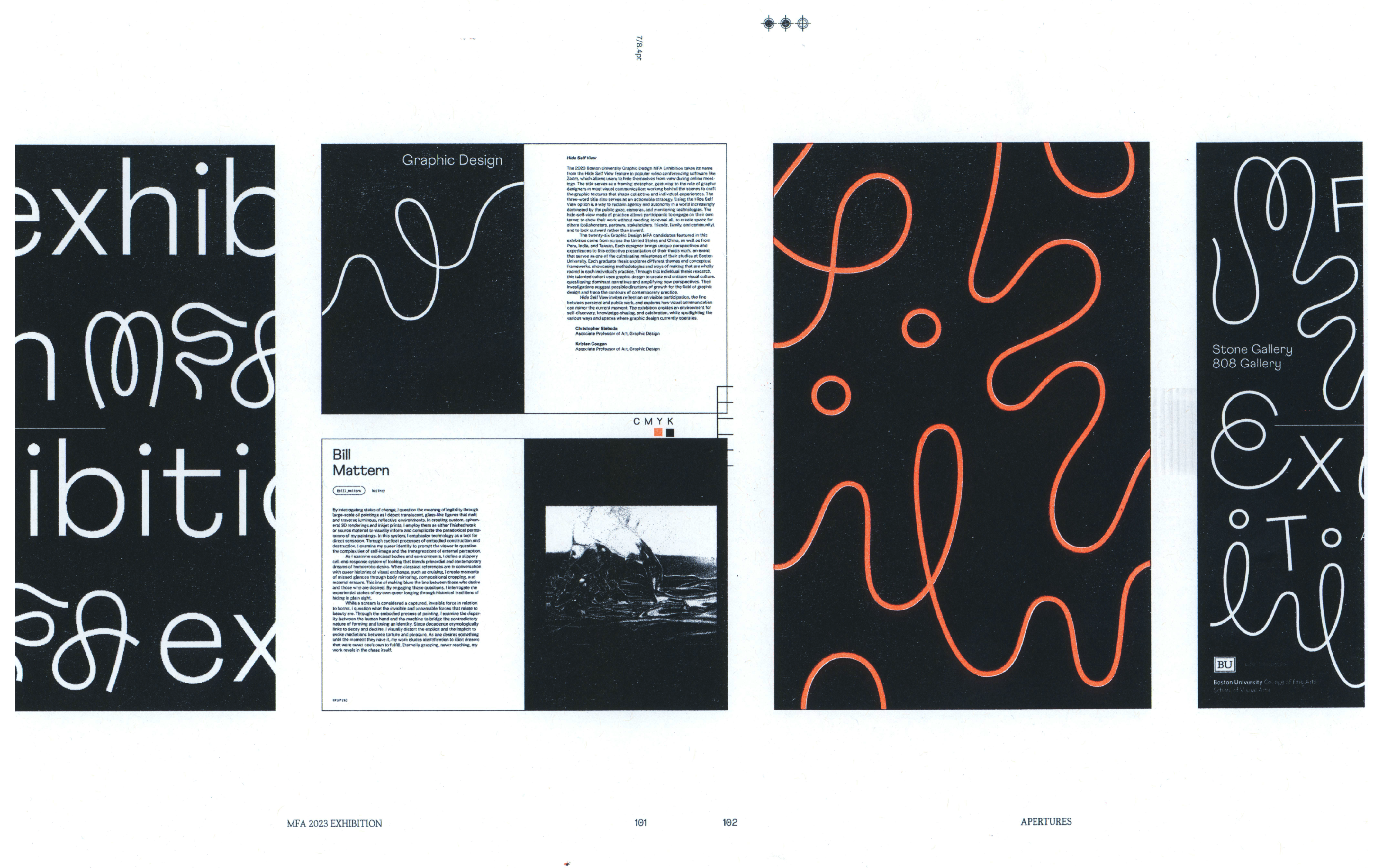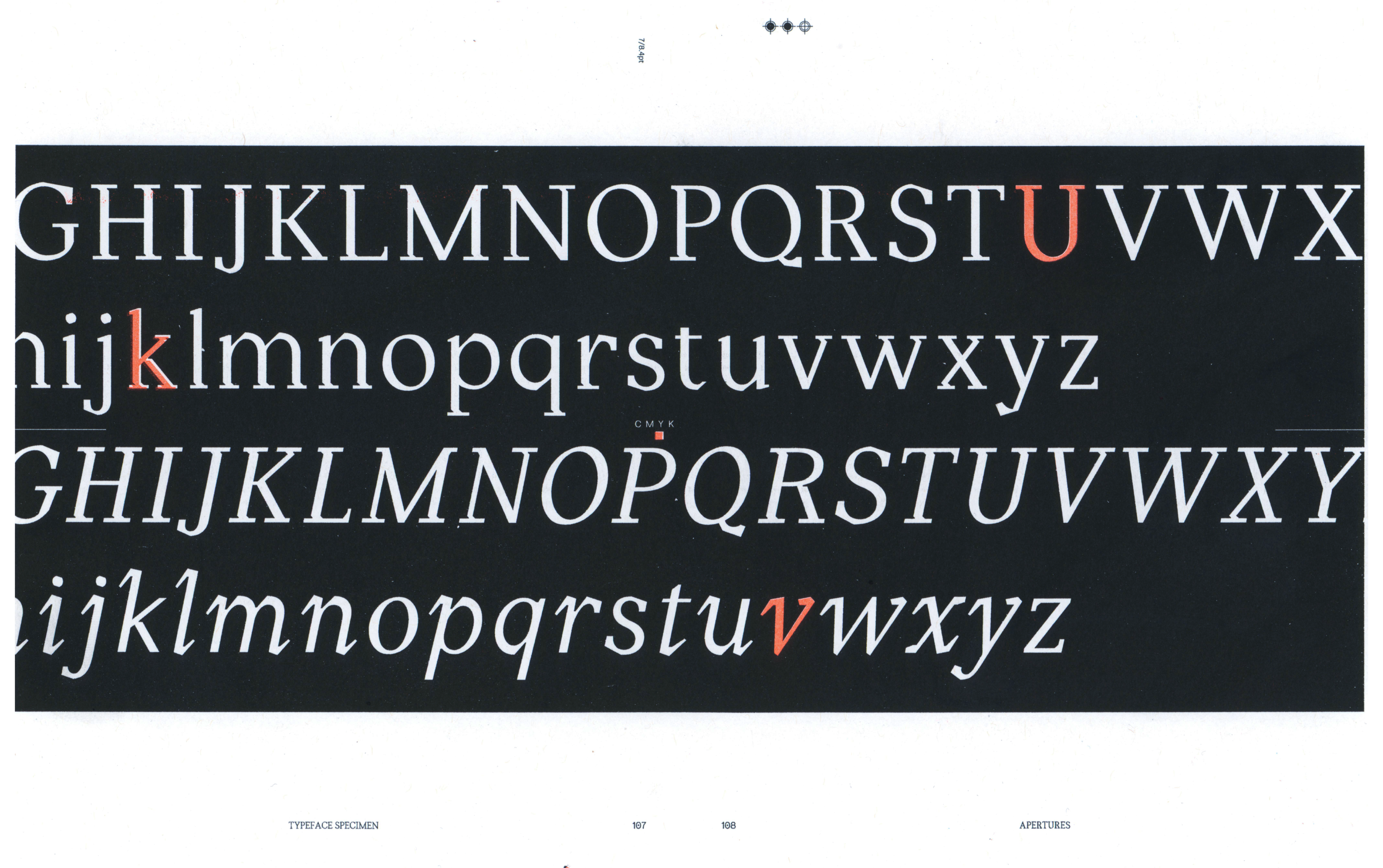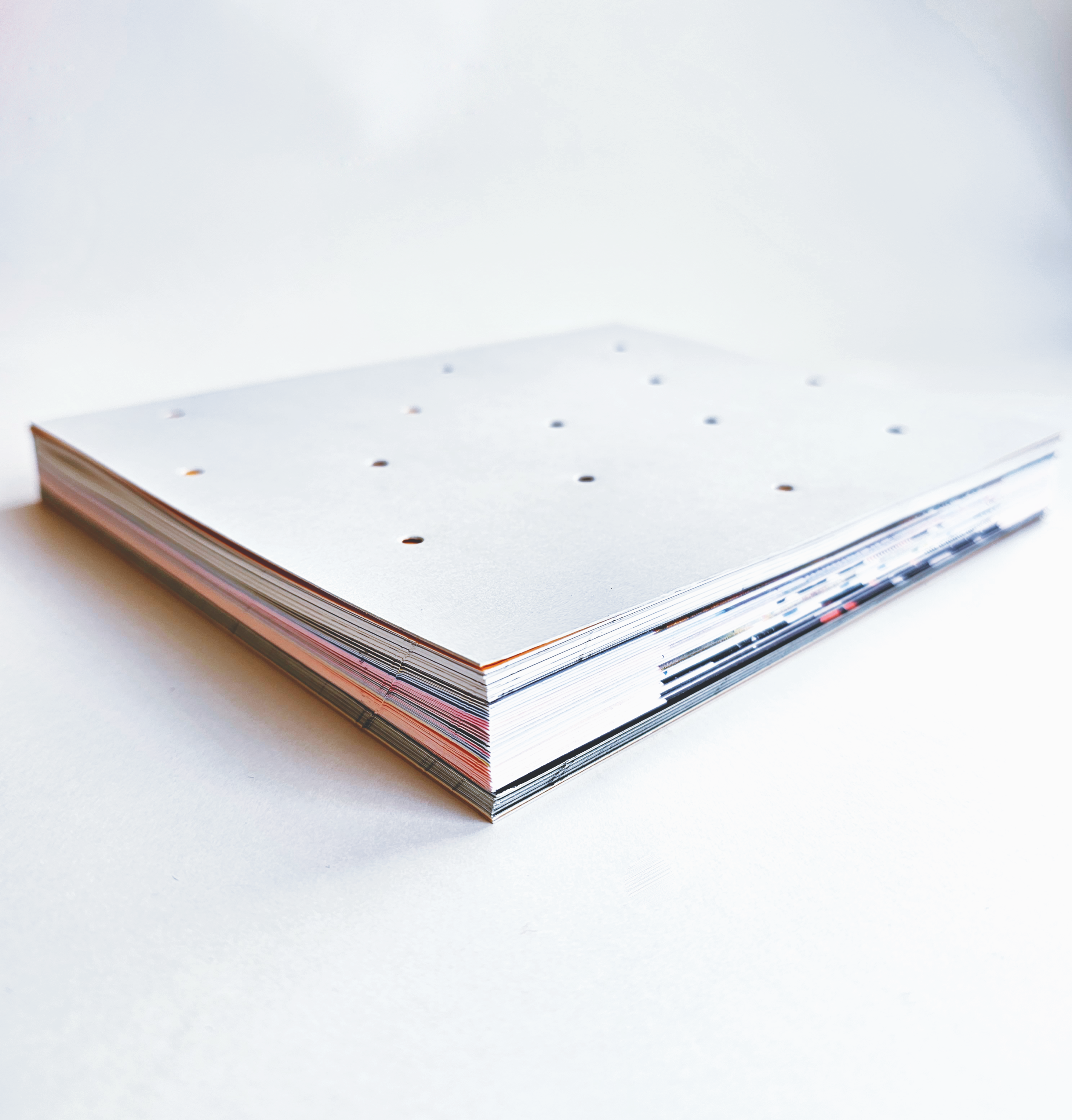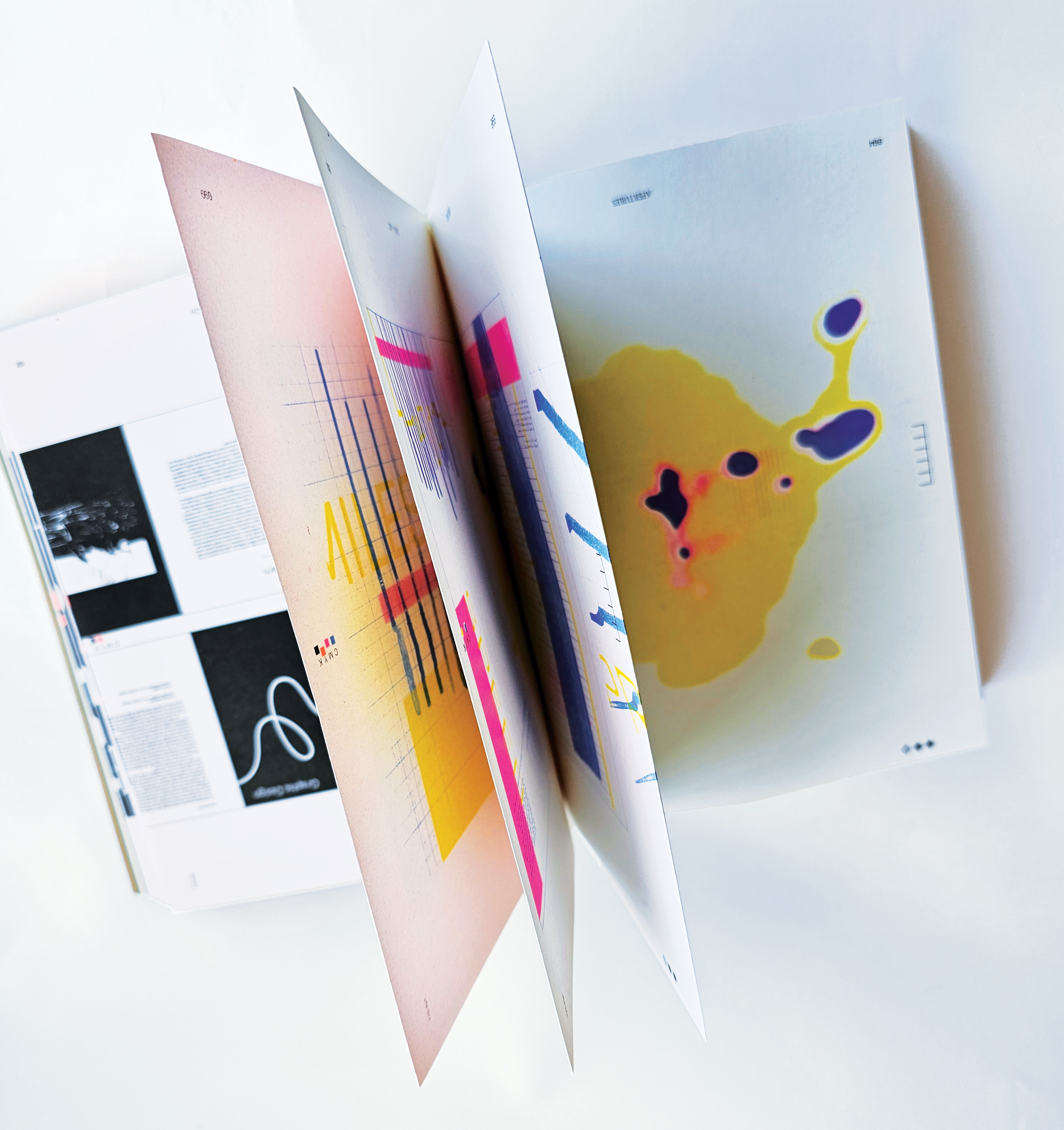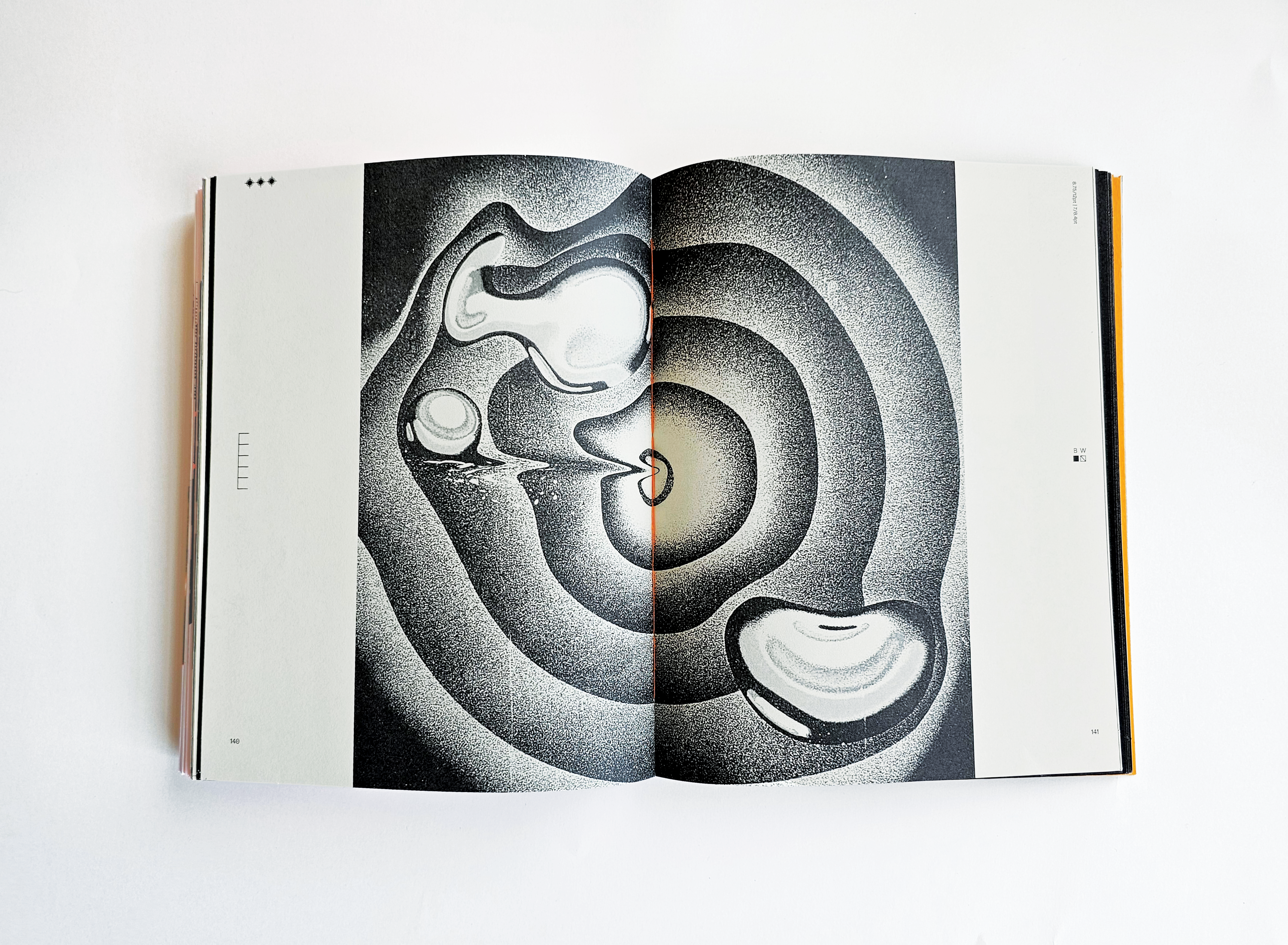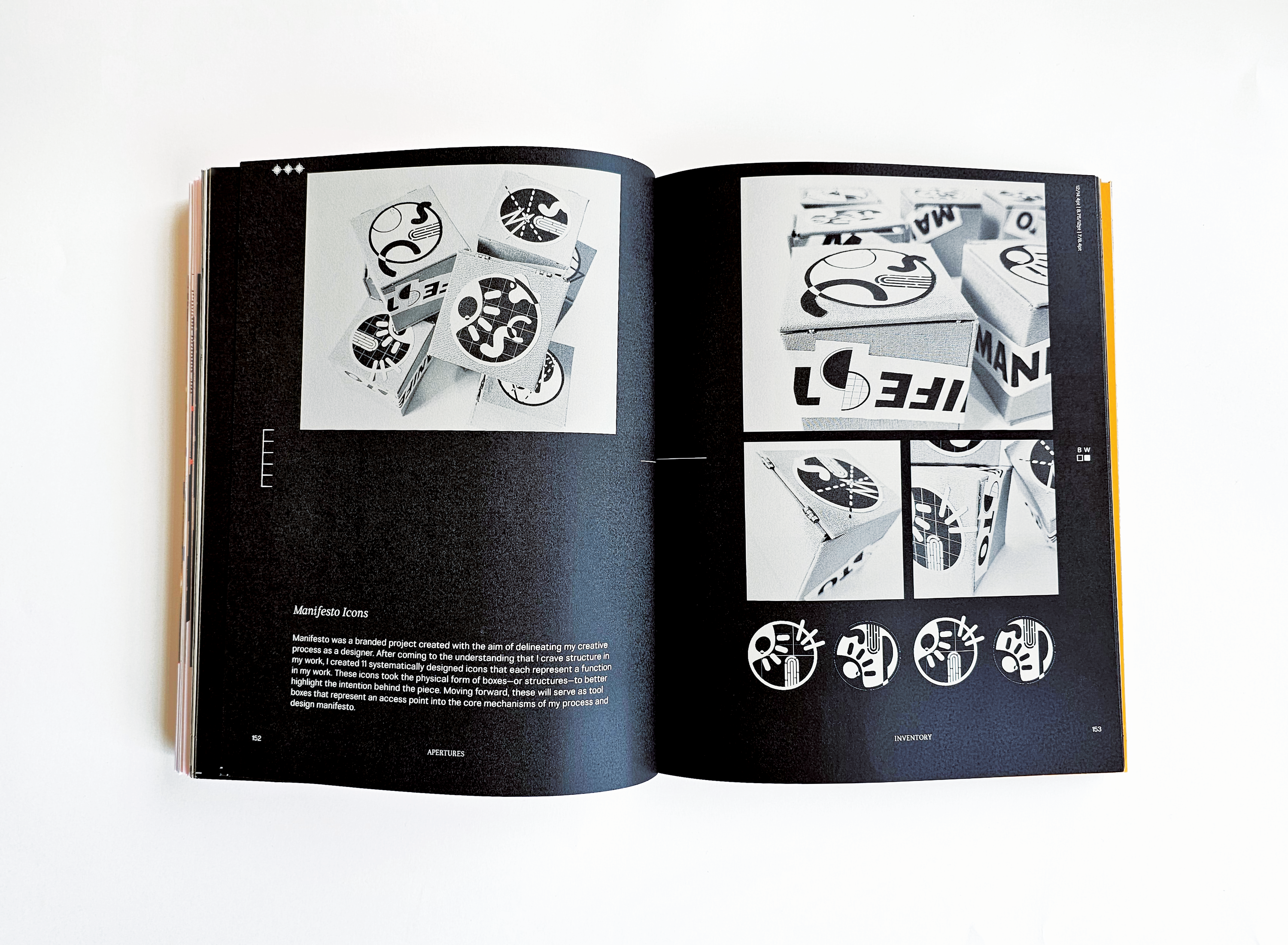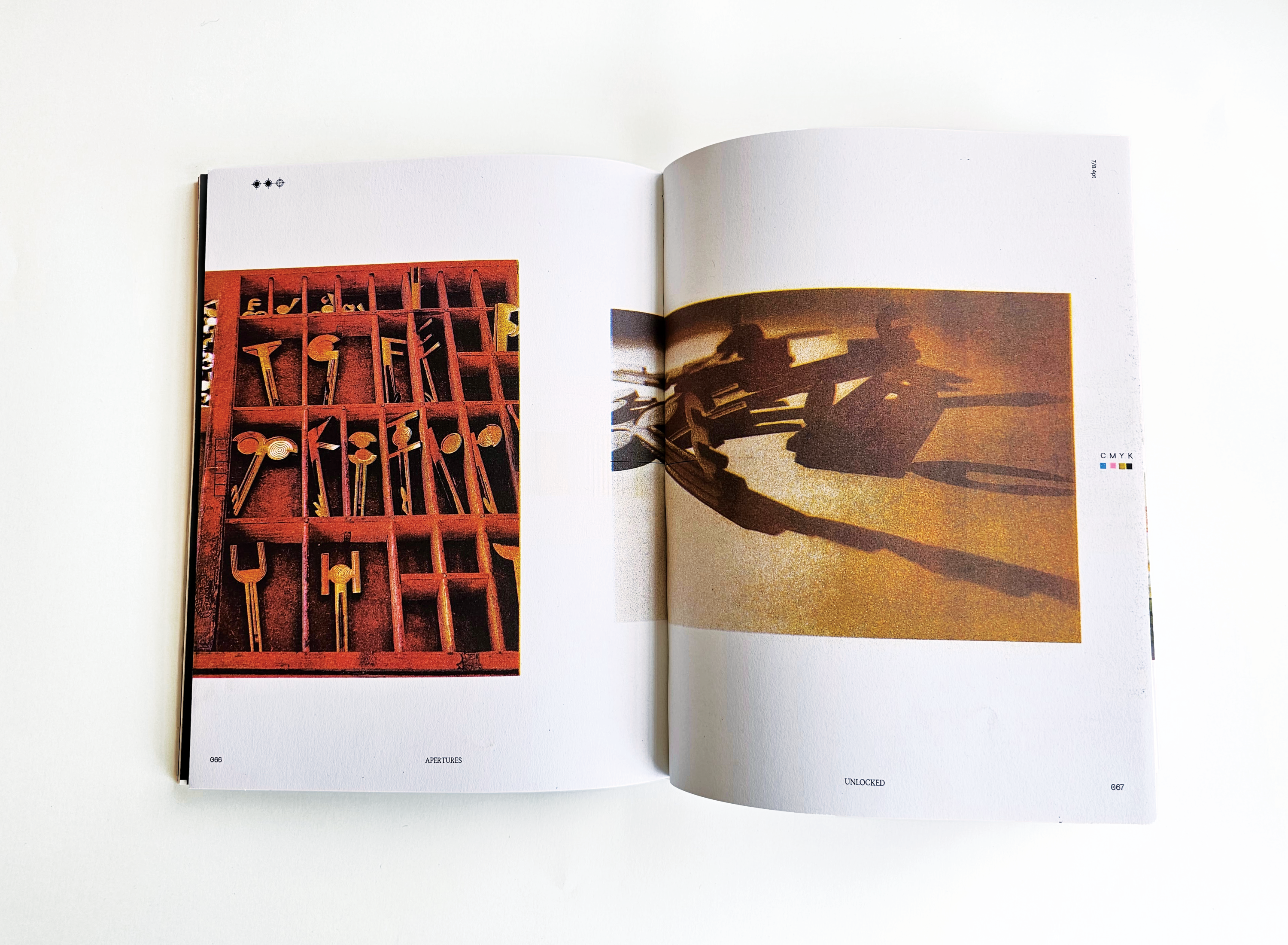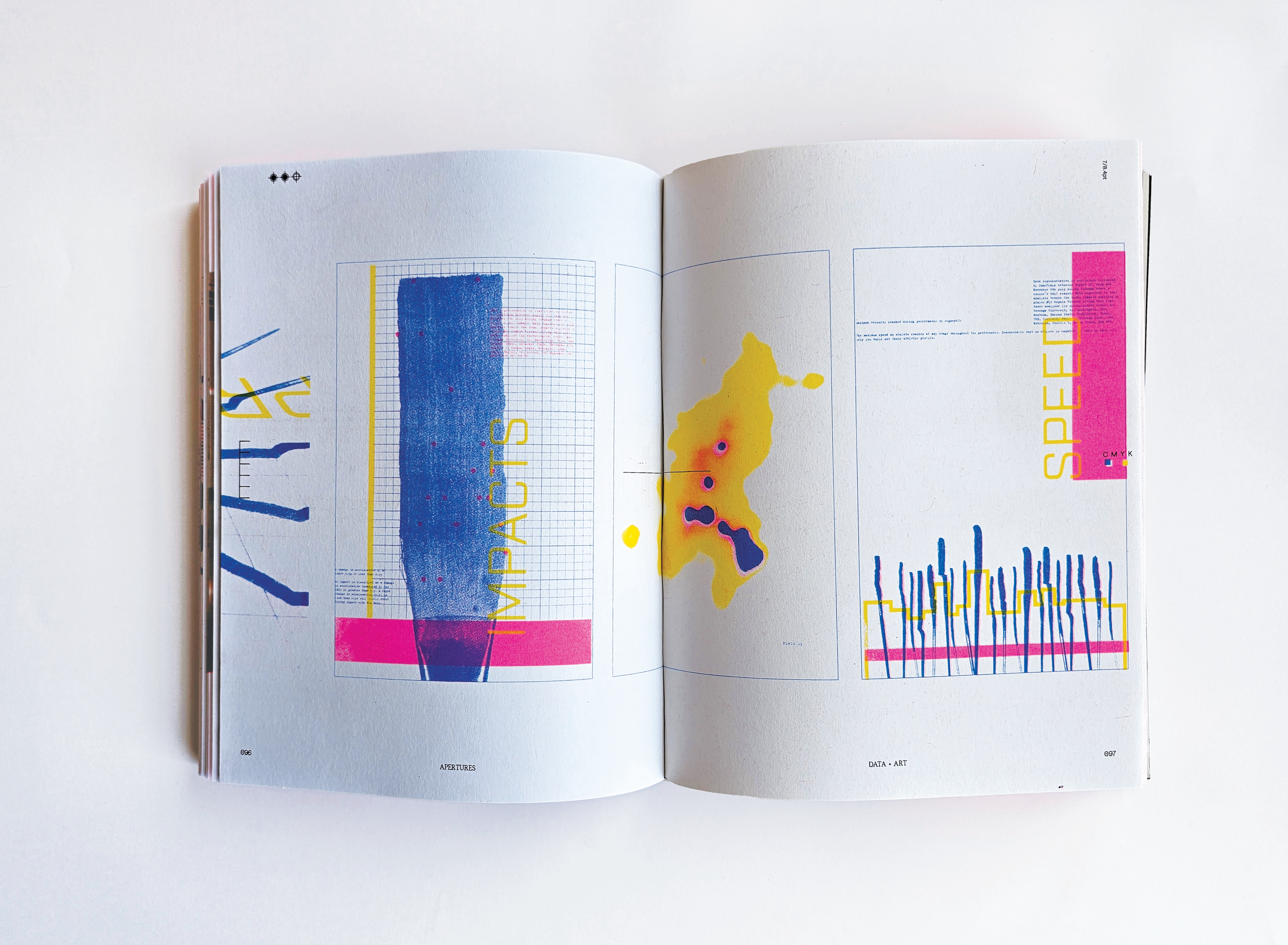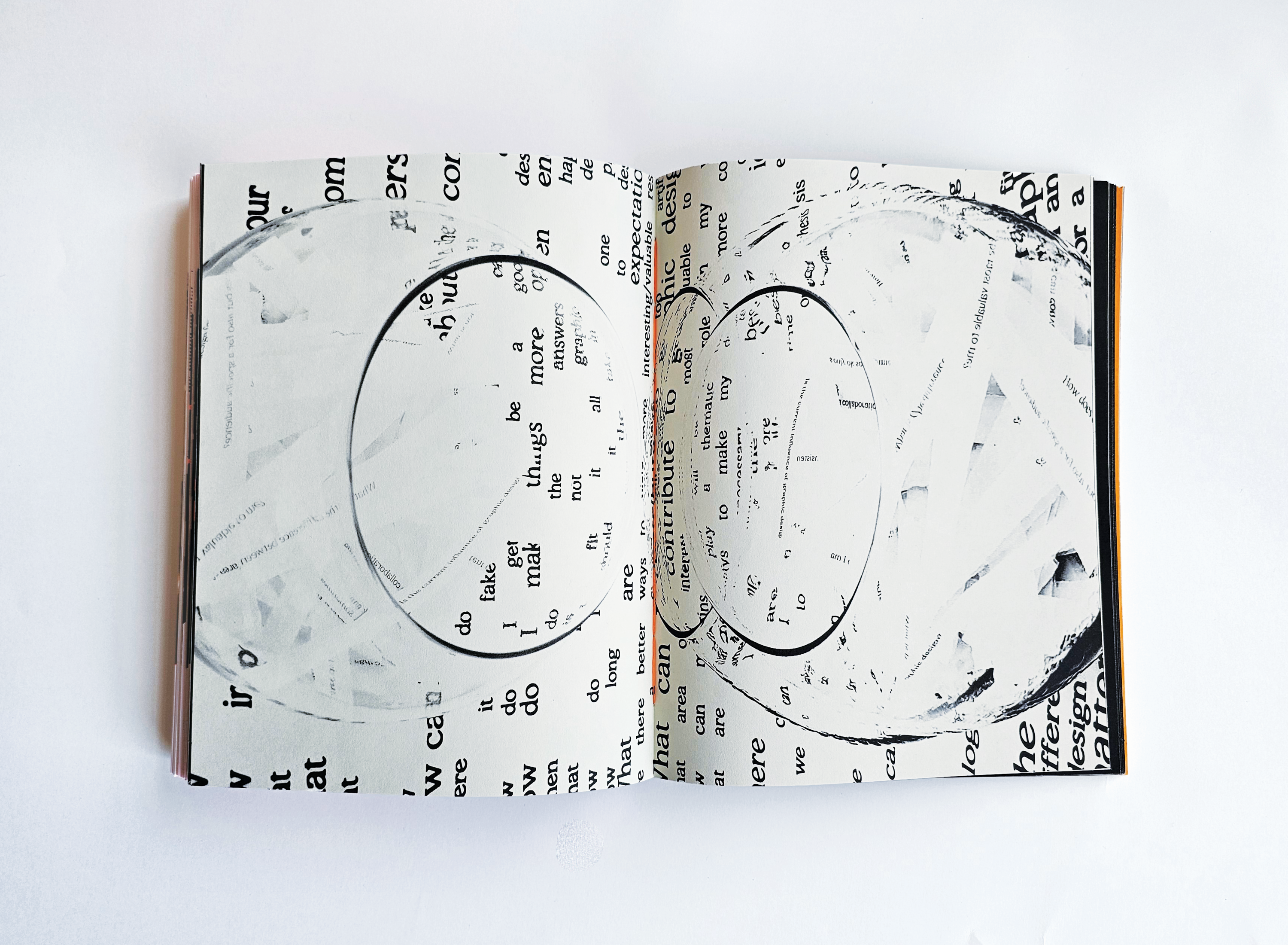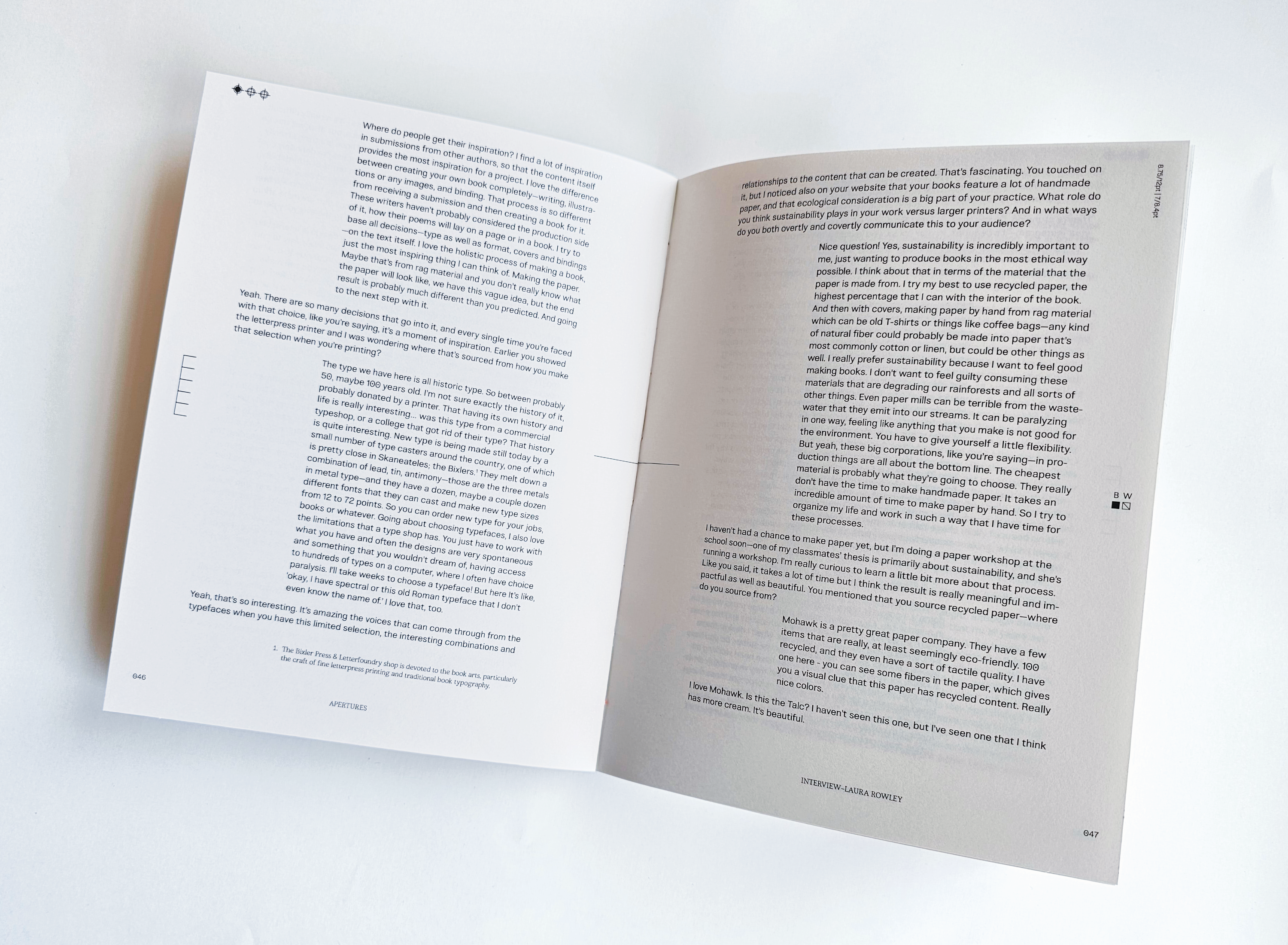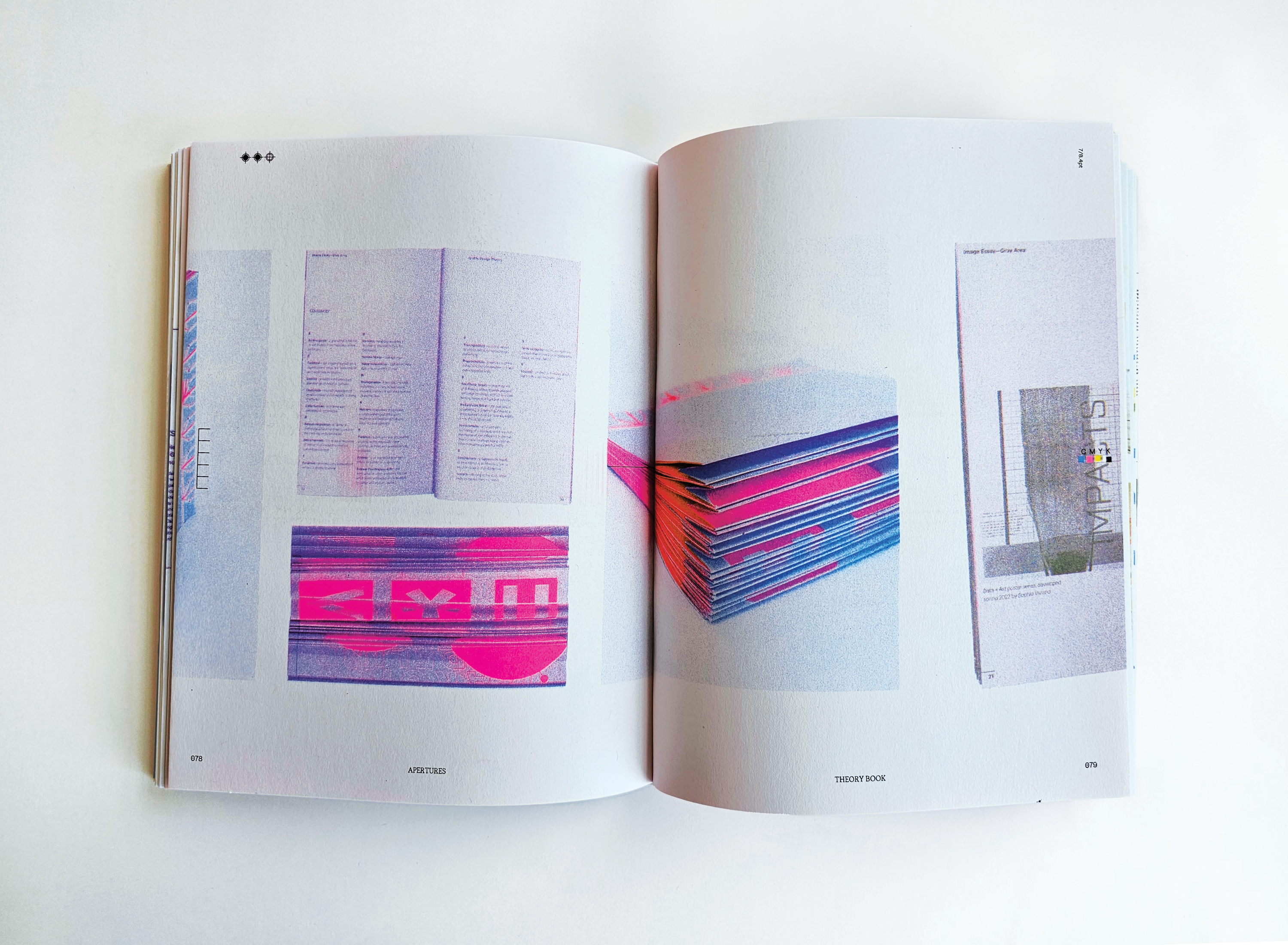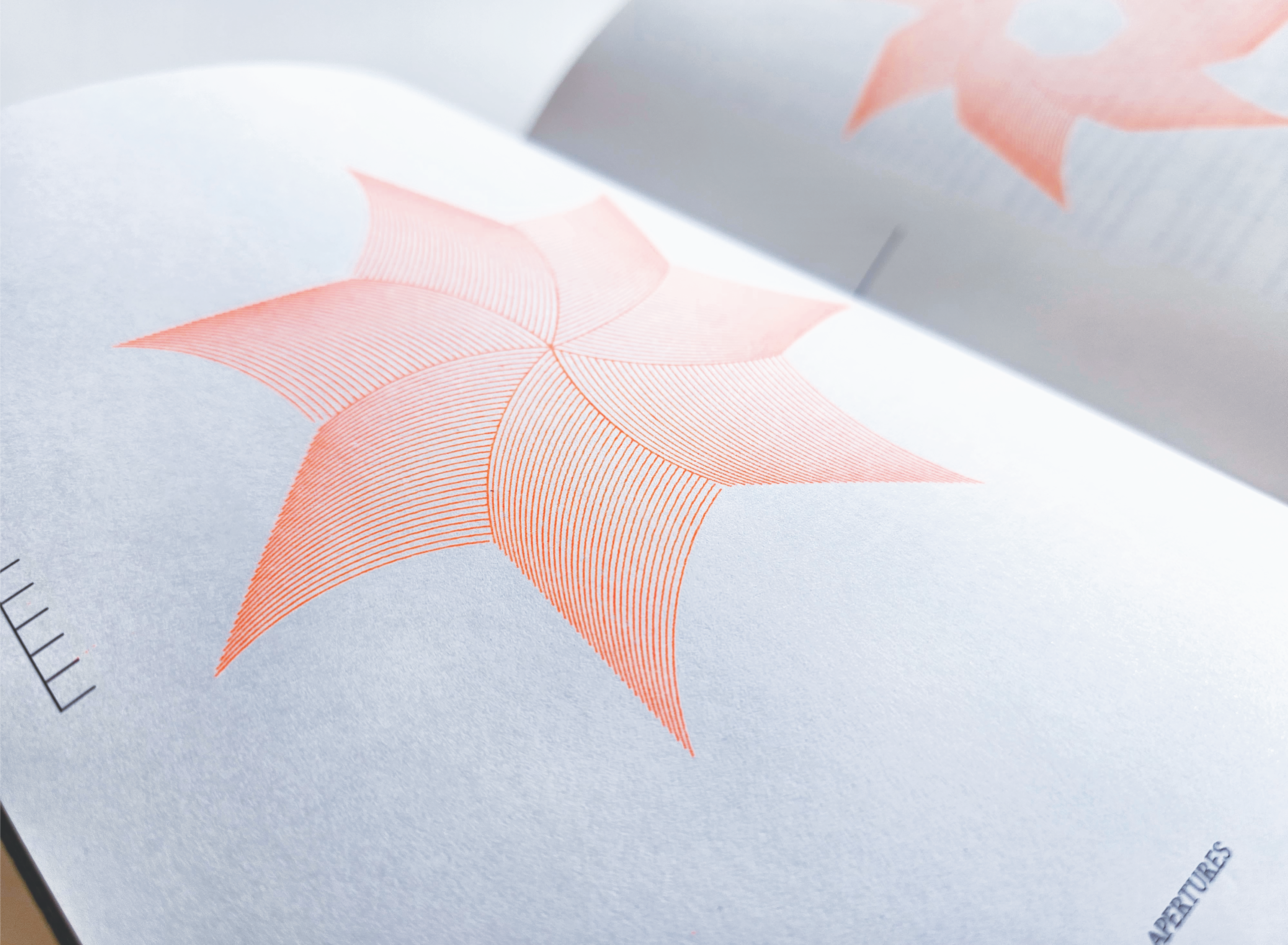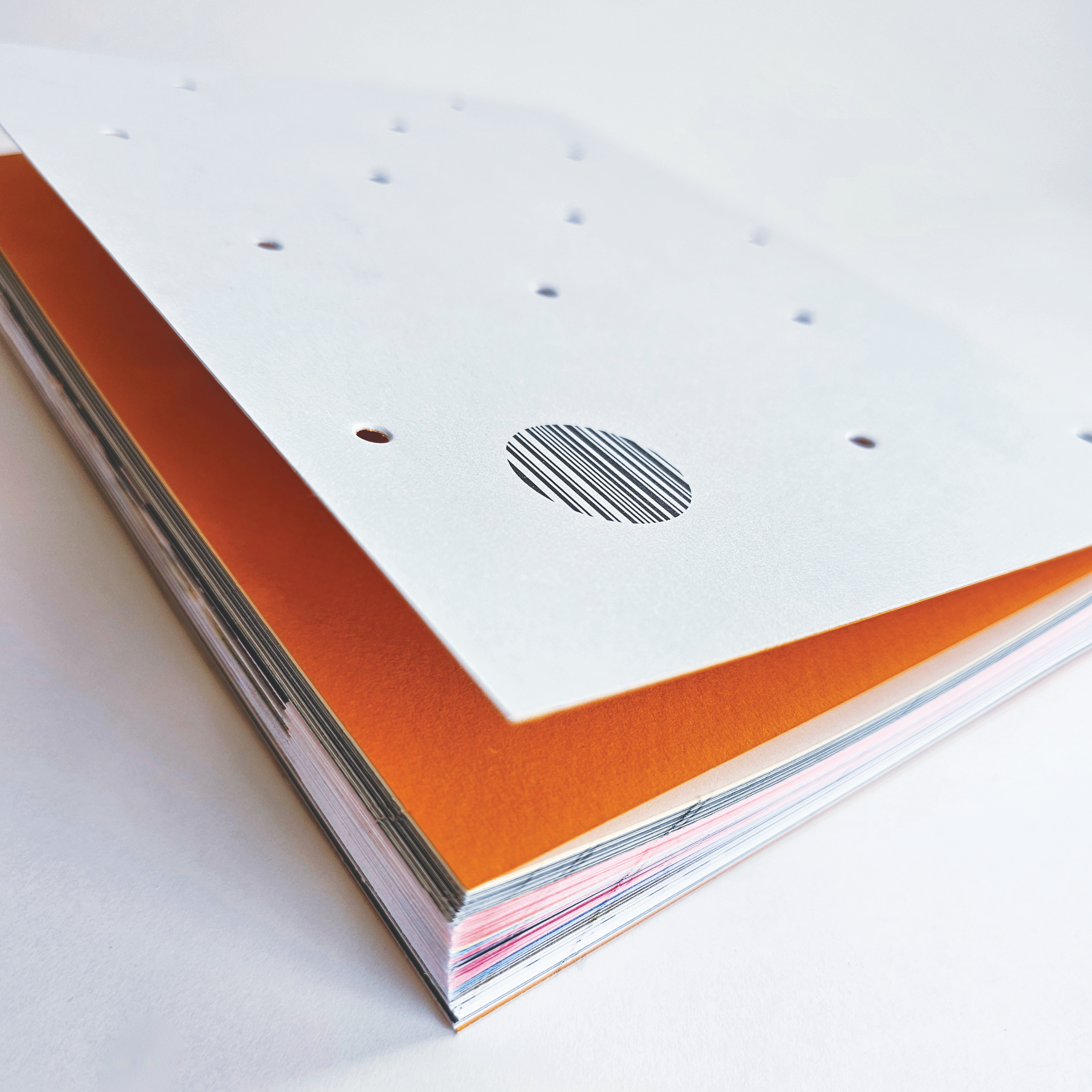
MFA THESIS
The term aperture has several multidisciplinary uses. To photographers, the aperture is the space in the lens through which light passes. In typography, Monotype defines the aperture as “[t]he partially enclosed, somewhat rounded negative space in some characters such as ‘n', ‘c', ‘s'…the opening to the counter space."1 Put simply, an aperture is a hole or gap.
Apertures exist as fixed systems in otherwise liminal spaces, and have an affecting influence on the content that passes through them. The camera aperture influences light, just as graphic design mediates the space between content and audience. By varying the width of the aperture in a camera, a photographer can choose to have more or less influence on how light is translated into the final image. Analogously, charged with presenting a particular piece of content, a designer can influence whether their process has more or less visibility in the final outcome.
My interest in process historically manifested itself in my affection for puzzles and unfinished works of art. I am fascinated by these visual representations of systems that would otherwise go unnoticed. This same fascination has motivated my exploration into typeface design. My thesis is a mechanism to explore the influence of these exposed systems in my own work, and to develop a methodology for making and thinking about how graphic design functions as an aperture.
By using design as an aperture for content I will apply my interest in exposed processes to further illuminate the relationship between design and audience.



